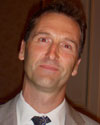Large engineering and construction firms will find a growing global market for capital outlays in the years ahead, but investors will be more demanding, according to speakers at the Engineering and Construction Contracting Association’s 42nd Annual ECC Conference in Orlando, Fla.

BARSHOP
Mega-projects around the globe should offer contractors significant opportunities in the near term, says Paul Barshop, chief operating officer of Independent Project Analysis, a consulting firm based in Ashburn, Va. In fact, Barshop believes the projected growth curve could prove steeper than the heydays of 2004 to 2007.
“There is a strong increase in spending expected, starting about now, in the fourth quarter and into 2011,” he says.
Attendees were skeptical about another booming market, however. During the speech, audience members responded electronically to questions about the topic. Roughly 65% indicated they thought the market would be worse than the forecast. Forty-nine percent thought the market would go up but not at a great rate, and 33% said it would stay relatively flat.
Michael Dudas, managing director of Jefferies & Co., a New York securities and investment banking firm, says investors are posing interesting dynamics for the industry.

DUDAS
“Excessive asset and commodity volatility witnessed during the 2007 to 2010 period has professional investors rethinking past strategies, challenging beliefs and focusing more on what can go wrong rather than what can go right,” Dudas says. “Clients are looking to preserve capital as opposed to accepting a bit more risk and pricing it appropriately.”
As a result, contractors will need to be disciplined.
“Can this industry forego backlog growth for profit growth?” Dudas asked. “Investors want to see management be judicious.”
So far, contracting firms have maintained that management discipline, Barshop says. But he wonders if they’ll be able to continue to do so if markets remain soft.
No matter the strength of the market, an investor focus on project sustainability will become more evident, says Paul E. Hardisty with WorleyParsons
“The future for human prosperity depends on how we tackle issues and how we go from a current carbon-dominated economy to something different,” Hardisty says.

HARDISTY
Also, calculating and including the costs of environmental and social issues on future projects will become more common.
“Including other things in the economic analysis can change how you look at a project,” Hardisty says. “To get the overall cost of power generated, include the people who suffer damage (from pollution). It changes the picture.”
When factoring in such costs, for instance, gas-fired power generation becomes cheaper than coal-fired, despite coal’s lower costs for raw materials.
“Achieving real sustainability is about being rational and objective,” Hardisty says. “We need an ability to look at problems more holistically and to unlock our creative talents.”


Post a comment to this article
Report Abusive Comment